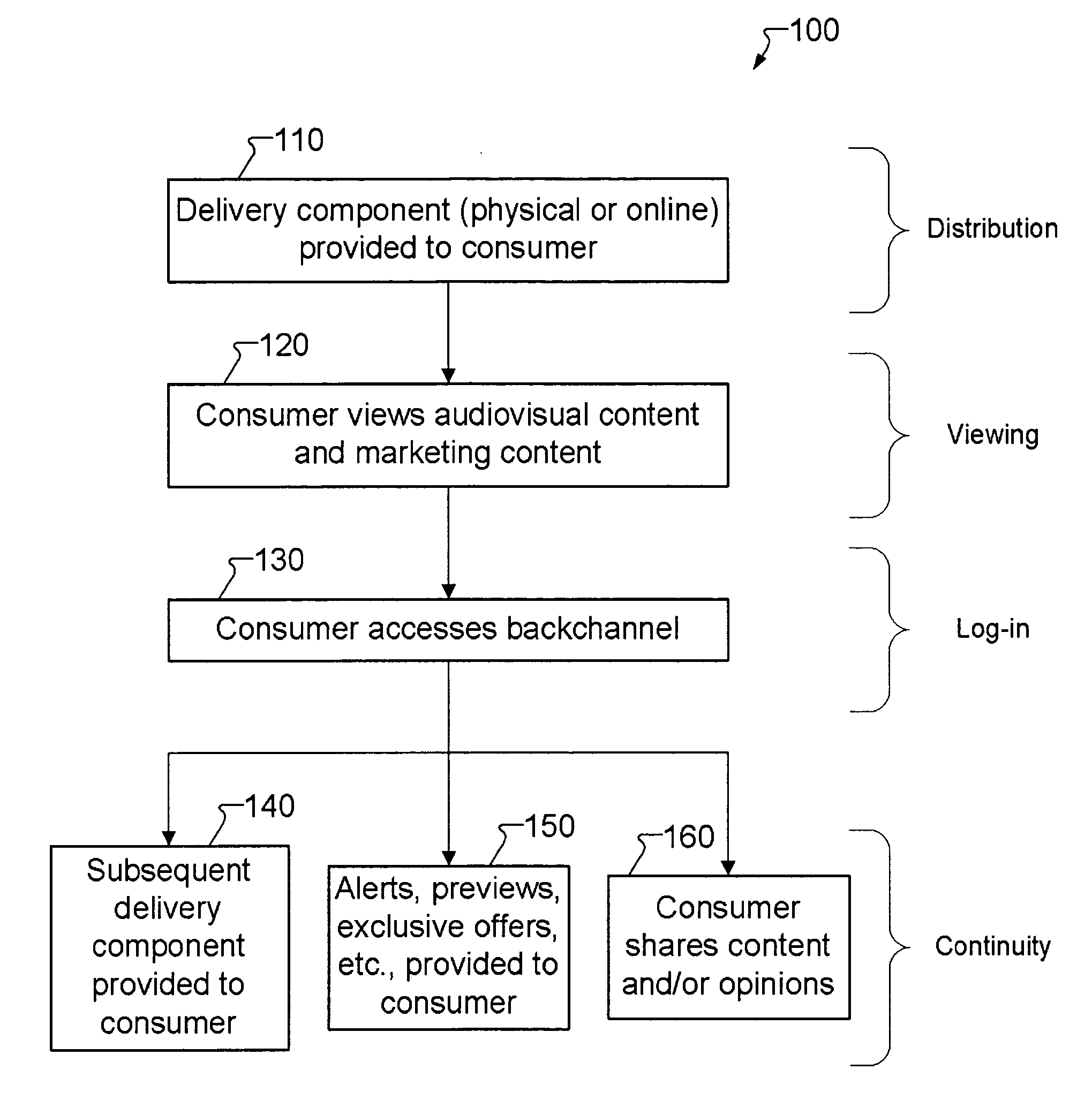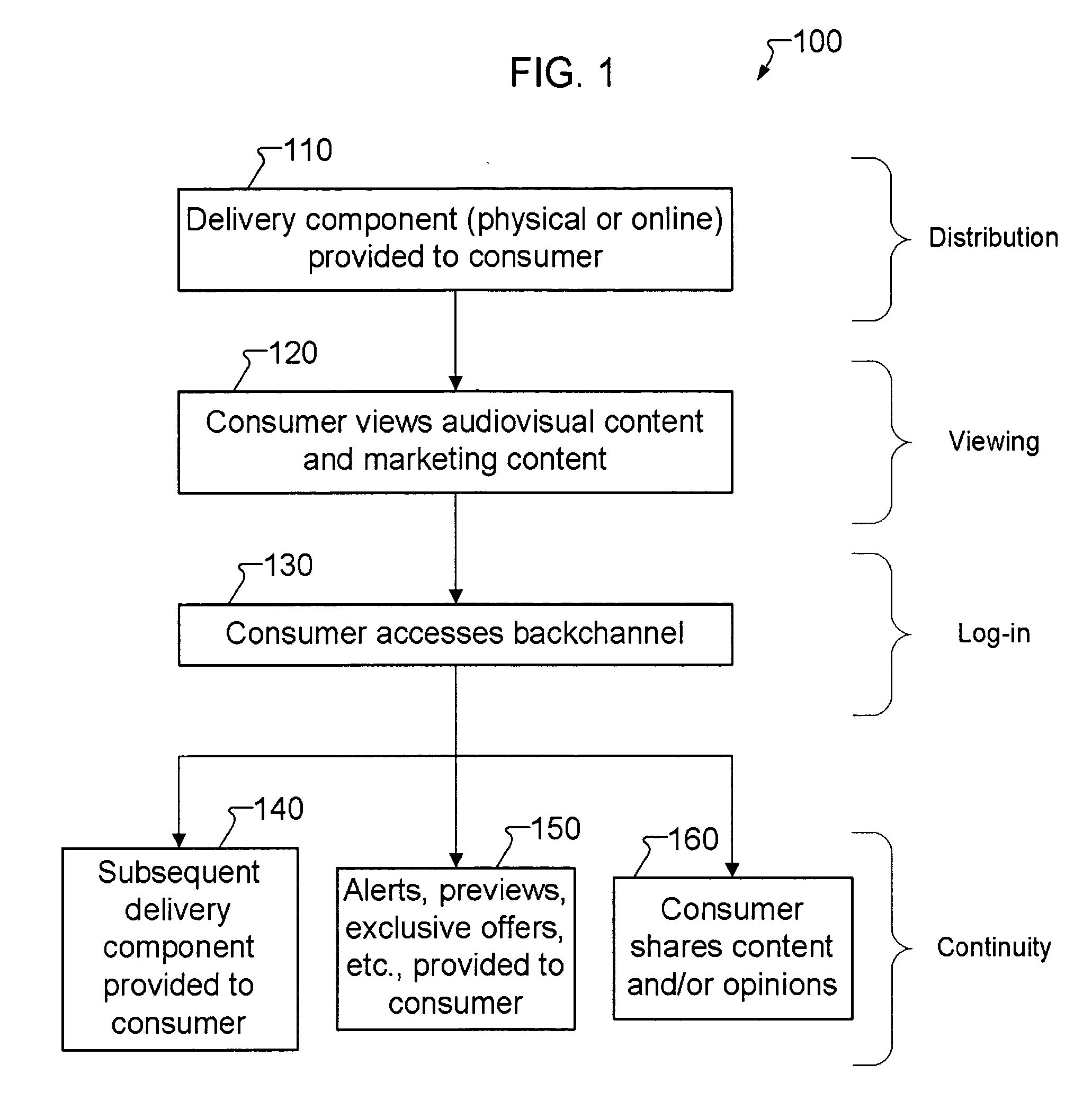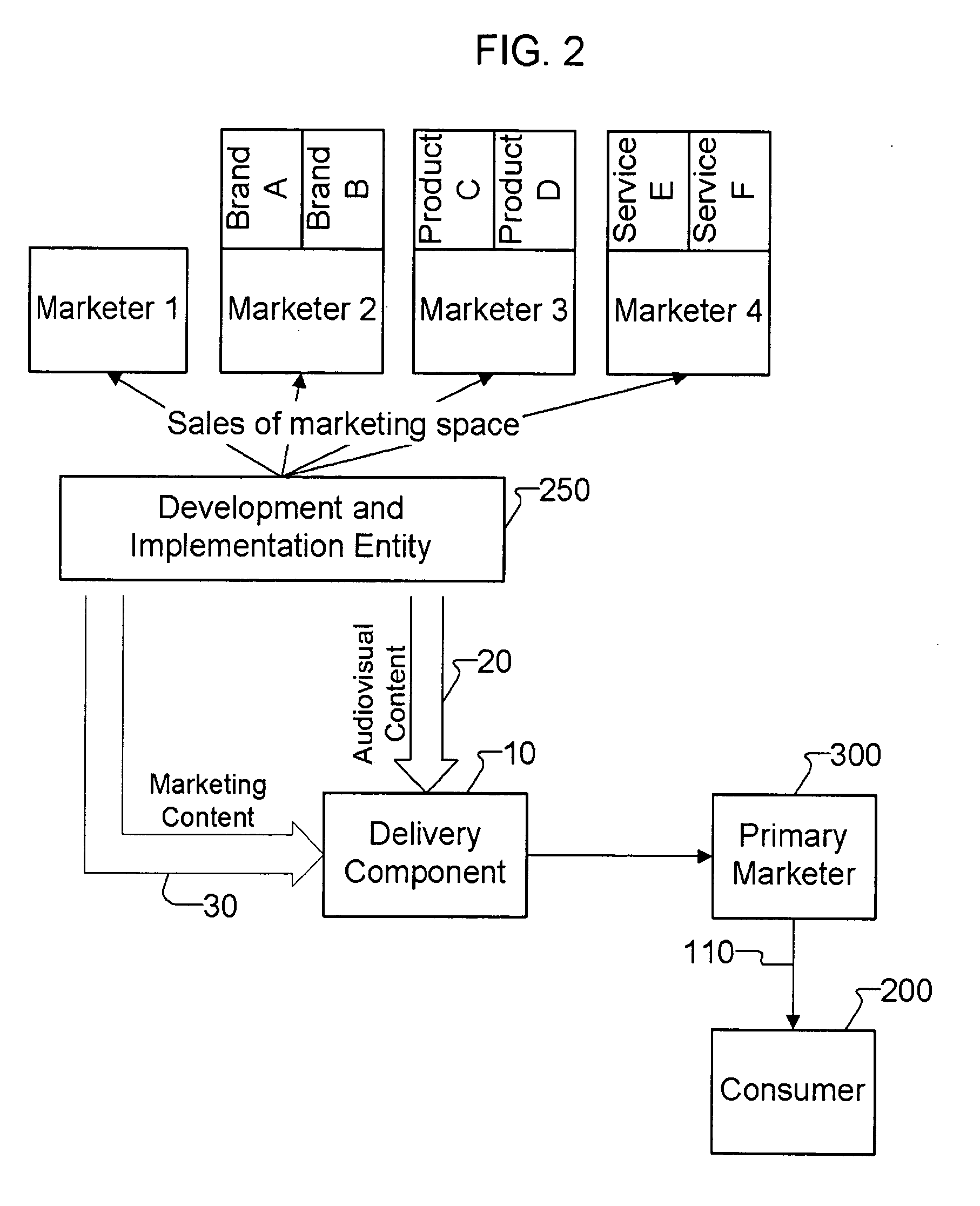Method for providing regular audiovisual and marketing content directly to consumers
a technology of audiovisual and marketing content, applied in the direction of marketing, instruments, data processing applications, etc., can solve the problems of increasing difficulty for product and service marketers in reaching their desired target consumers through various traditional media, increasing cost of spots, and decreasing ratings of broadcast television
- Summary
- Abstract
- Description
- Claims
- Application Information
AI Technical Summary
Benefits of technology
Problems solved by technology
Method used
Image
Examples
Embodiment Construction
[0034] In the above-identified drawing figures, and in the description here, it is assumed that the reader is already thoroughly familiar with the technical aspects of this field of endeavor. Readers desiring to learn more about the underlying technology are invited to consult the documents mentioned in the “Related Art” section, above. Therefore, unnecessary details have been omitted from both the drawing figures and the description so as to avoid obscuring the invention. Furthermore, it will be appreciated that the invention is taught herein by way of some examples, but that the invention is not limited to just the disclosed examples and has a scope defined by the appended claims.
[0035] The invention resides, in one embodiment, in a method to develop and implement a direct two-way communication channel between product and service marketers and consumers, in the concrete development and implementation of all of the method's components (including but not limited to the off-line and...
PUM
 Login to View More
Login to View More Abstract
Description
Claims
Application Information
 Login to View More
Login to View More - R&D
- Intellectual Property
- Life Sciences
- Materials
- Tech Scout
- Unparalleled Data Quality
- Higher Quality Content
- 60% Fewer Hallucinations
Browse by: Latest US Patents, China's latest patents, Technical Efficacy Thesaurus, Application Domain, Technology Topic, Popular Technical Reports.
© 2025 PatSnap. All rights reserved.Legal|Privacy policy|Modern Slavery Act Transparency Statement|Sitemap|About US| Contact US: help@patsnap.com



